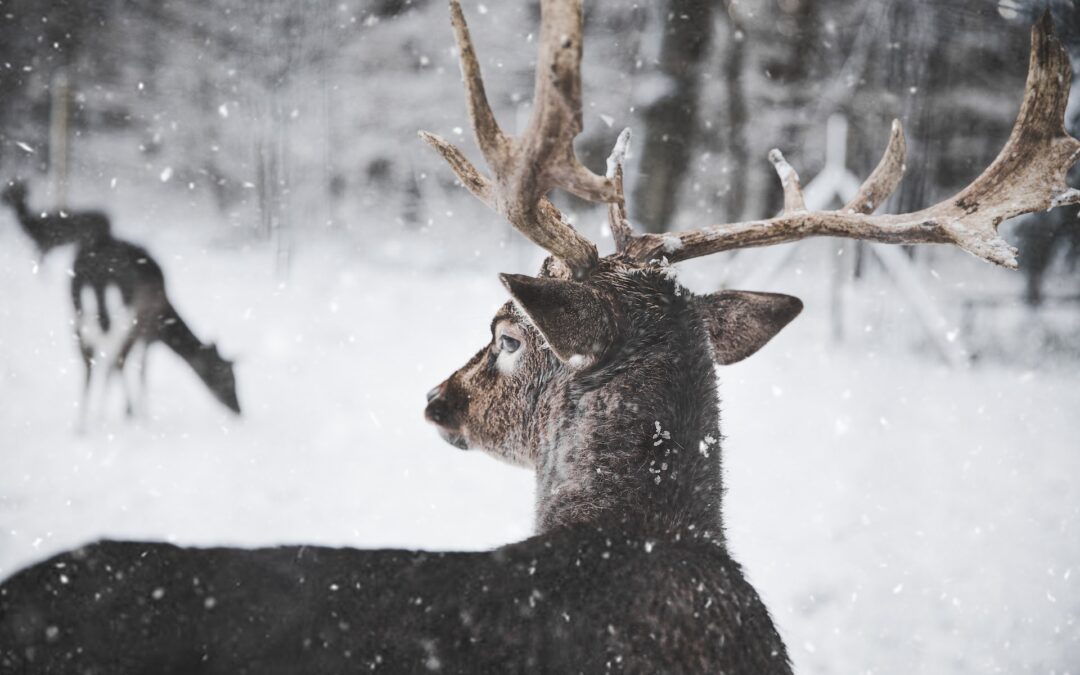Oak Creek Whitetail Ranch is proud to hold the records for 33 of the top 35 whitetail deer! So, we know a thing or two about Whitetail Deer (Odocoileus Virginianus). Our November blog presents the facts about the differences in hunting Whitetail Deer in winter.
Winter Changes Everything
Remember that during the winter season, a whitetail will spend as much as 90% of their time bedded instead of being active. Whitetail movement during the day significantly declines as daylight hours become limited. Deer do not trail as much as they would during the early season since they would be consuming energy reserves for no reason once the rut is over.
Considering whitetail deer spend more time moving slowly in a more confined area, abandoning your usual stationery stand and moving slowly through the woods will increase your chances.
Although this is not an easy change to make, it is worth the adjustment. The key to attaining your goal when still-hunting is to be patient. You must move slowly, using available coverage, and always be ready to spot your prey.
Instead of locating a very dense and thickly wooded area that you would seek early in the season, look for background coverage. Seeking background coverage simply means looking for an area that is going to allow you to blend in a little better by having a lot of branches and high bushes.
Your winter plan should concentrate on hunting in small areas that offer good bedding coverage and ample winter food sources available. The most obvious sign to look for a bedding area is the presence of oval depressions in the grass, brush, or dirt indicating where a deer has laid down. In the winter season when foliage is sparse, whitetail deer prefer grapevines and leaves on the ground.
Another late-season food source of choice is brassicas—plants like turnips, kale, grape, and radishes—which become particularly attractive if they are available in frigid temperatures.
Shift Your Hunting to Afternoon
If temperatures are peaking at 35 during the late afternoon, a 12-degree beginning to the day can urge deer to remain in their beds until the morning temperatures begin to significantly climb. That is why it makes sense to skip your typical morning hunt, sleep in, and wait until the afternoon.
When the conditions of wind, cold, and snow turn particularly brutal, you can use those extremes to your advantage. A windy, blustery snowstorm will typically slow down deer as it passes through, but immediately after it settles, you can count on increased movement. All that pent-up energy and a desire to feed motivates deer to get on their feet and move more than usual—especially on the first clear afternoon after a storm.
In short, hunt when deer are moving – when temperatures are well below average for your area.
The more you know about the behavior of Whitetail Deer, the more successful you will be this hunting season. For more information on the behavior of whitetail deer, visit our website at https://oakcreekwhitetailranch.com/.


Recent Comments